
Why Do My Toddler’s Teeth Look Discolored?
7 min readWritten by Dr. Hafsa Fatima

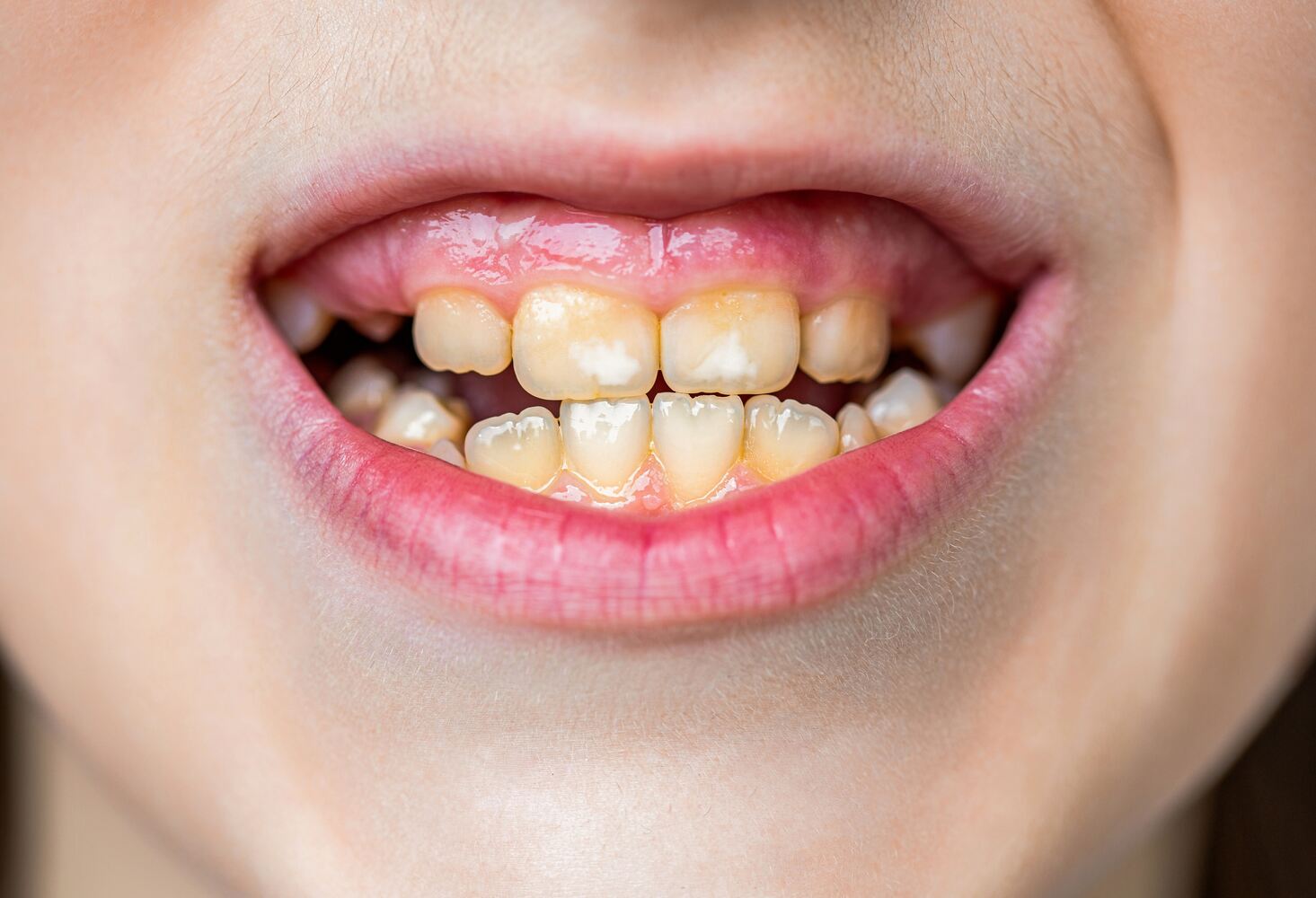
It might seem surprising for you to see your toddler’s teeth discolored. But it is possible! Toddlers and young kids too develop stains on their teeth. It is not uncommon to notice signs of tooth discoloration and this should not be ignored. There are several reasons why a toddler’s teeth might develop stains. Some of these reasons may be serious while others can be resolved by implementing a few basic oral hygiene practices.
Read on to find out more about the causes of tooth discoloration in toddlers, and discover how they can be treated and prevented.
In This Article
- What Does Tooth Discoloration Mean?
- At What Age Does Discoloration First Appear?
- What Are The Causes of Tooth Discoloration in Toddlers?
- How is Tooth Discoloration Treated in Toddlers?
- How Can You Prevent Tooth Discoloration in Toddlers?
- FAQ’s
What Does Tooth Discoloration Mean?

A toddler’s teeth look discolored which is said to happen if the color and appearance of the primary teeth change from that of the normal typical ‘off-white’ or ivory color. Discoloration of a toddler’s teeth can be of two types (1a)-
External Tooth Discoloration
External discoloration is caused when food, medication, or beverages are absorbed into the tooth film (protein film that forms on the surface of the enamel of the teeth). This can be removed through some simple procedures.
Internal Tooth Discoloration
Internal tooth discoloration can occur either directly or indirectly due to several internal factors that affect the health of the child. Dentine defects, enamel hypoplasia (incomplete development of enamel), metabolic disorders, systemic syndrome, etc. Removal of the stains caused by the internal factors is not easy to remove.
At What Age Does Discoloration First Appear?
There is no particular age bar for the appearance of stains, white or gray spots, or white streaks on a child’s teeth. Even the first emerging teeth can show these issues. That is why it is imperative to follow a strict dental care routine since early childhood.
What Are The Causes of Tooth Discoloration in Toddlers?
Discoloration in your toddler’s teeth can be due to several reasons, like-
1. Improper Brushing of Teeth
Not brushing the toddler’s teeth properly results in plaque formation. Plaque gets formed as a result of bacterial action on food debris, which can lead to teeth discoloration.
[Read : Teaching Your Toddler to Brush Their Teeth]
2. Dental Caries
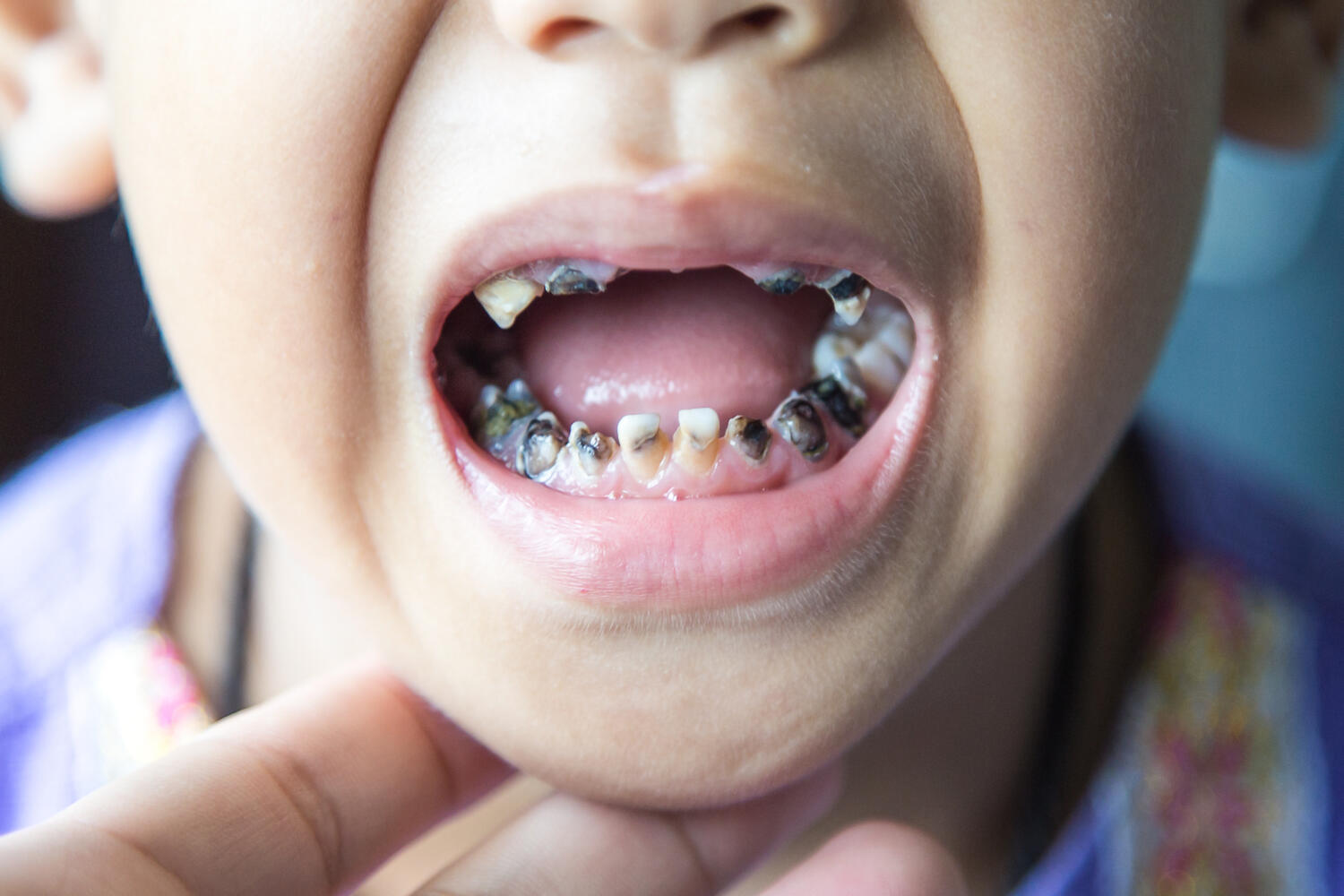
Dental caries is a progressive destruction of the tooth’s enamel (outermost layer of the tooth) layer due to a process known as demineralization. Poor oral hygiene can pave the way for increased plaque and food debris accumulation that favor the growth of bacteria. Acids and toxins released cause the enamel layer to erode and appear discolored. Discoloration may range from yellow, brown to black (1b).
3. Dietary Habits
Diet is another major contributor to tooth stains in toddlers. Teeth-staining, and cavity-causing foods and beverages like berries, juices, citrus fruits, sodas, and candies can increase the risk of tooth decay and cavities in toddlers that may end up in tooth discoloration.
[Read : Toddler Tooth Decay Treatment]
4. Enamel Hypoplasia
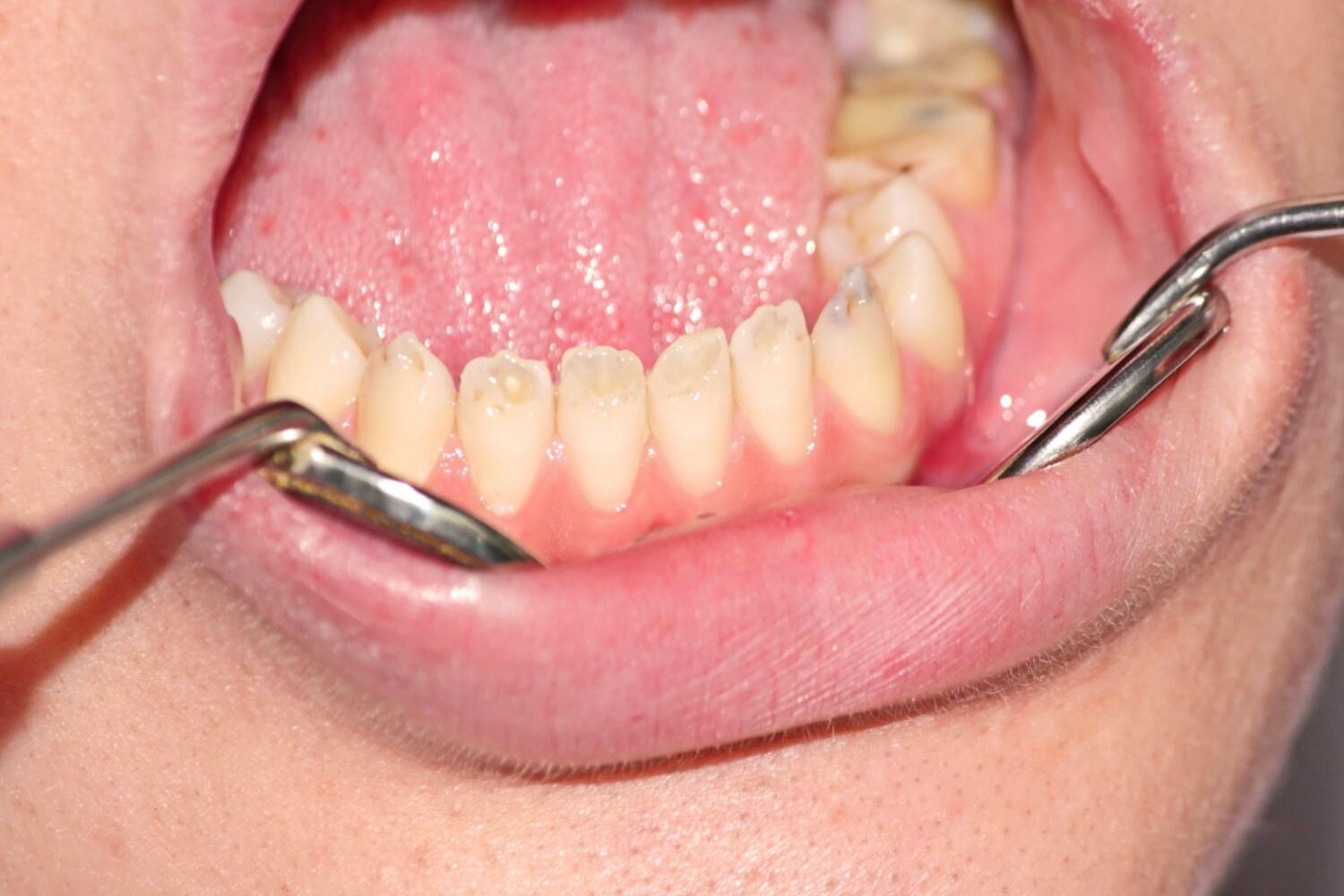
This is a genetic condition in which the enamel coating is either thinner than normal or is missing in the teeth. This is not uniform in occurrence, and the coating is either optimum or thin in some areas. Enamel deformities can show up on the toddler’s teeth as hollowed, harsh surfaces or with white, yellow, or brownish discoloration on affected teeth. Thus, a toddler with weak enamel may end up with discolored teeth. Other examples include amelogenesis imperfecta, and dentinogenesis imperfecta (2).
5. Fluorosis
Fluoride when used in adequate amounts is beneficial to prevent dental caries since it can strengthen the enamel layer. However, overconsumption of fluorides in the form of water fluoridation or using fluoride toothpaste can do more harm than good. Increased fluoride in the body causes fluorosis which is characterized by whitish or yellowish patches or streaks on the teeth (1c).
6. Injury
Trauma that could have happened to the toddler’s teeth or gums due to a fall or a blow during an accident (even before the teeth emerge) can cause discoloration. The discoloration happens as the blood vessels inside the pulp chamber break, and the blood gets absorbed by the dental tubule, which goes to the enamel. As the enamel is semi-transparent, the blood stains are reflected through the enamel. Often the injury gives a pink or gray tinge to the toddler’s teeth (3).
7. Chronic illness
Recurrent high fever, newborn hepatitis, and some type of heart disease can also result in tooth discoloration in toddlers.
8. Use of Medicines
Many medications or multivitamin supplements containing iron can cause dark stains on the toddler’s teeth. Vitamin supplements, tetracyclines, and medicines containing iron can cause dark stains in toddlers, while antibiotics and antihistamines are responsible for gray or yellow stains (4).
9. Jaundice
A baby who gets infected with jaundice after birth might develop tinted teeth more often with a greenish tinge.
How is Tooth Discoloration Treated in Toddlers?
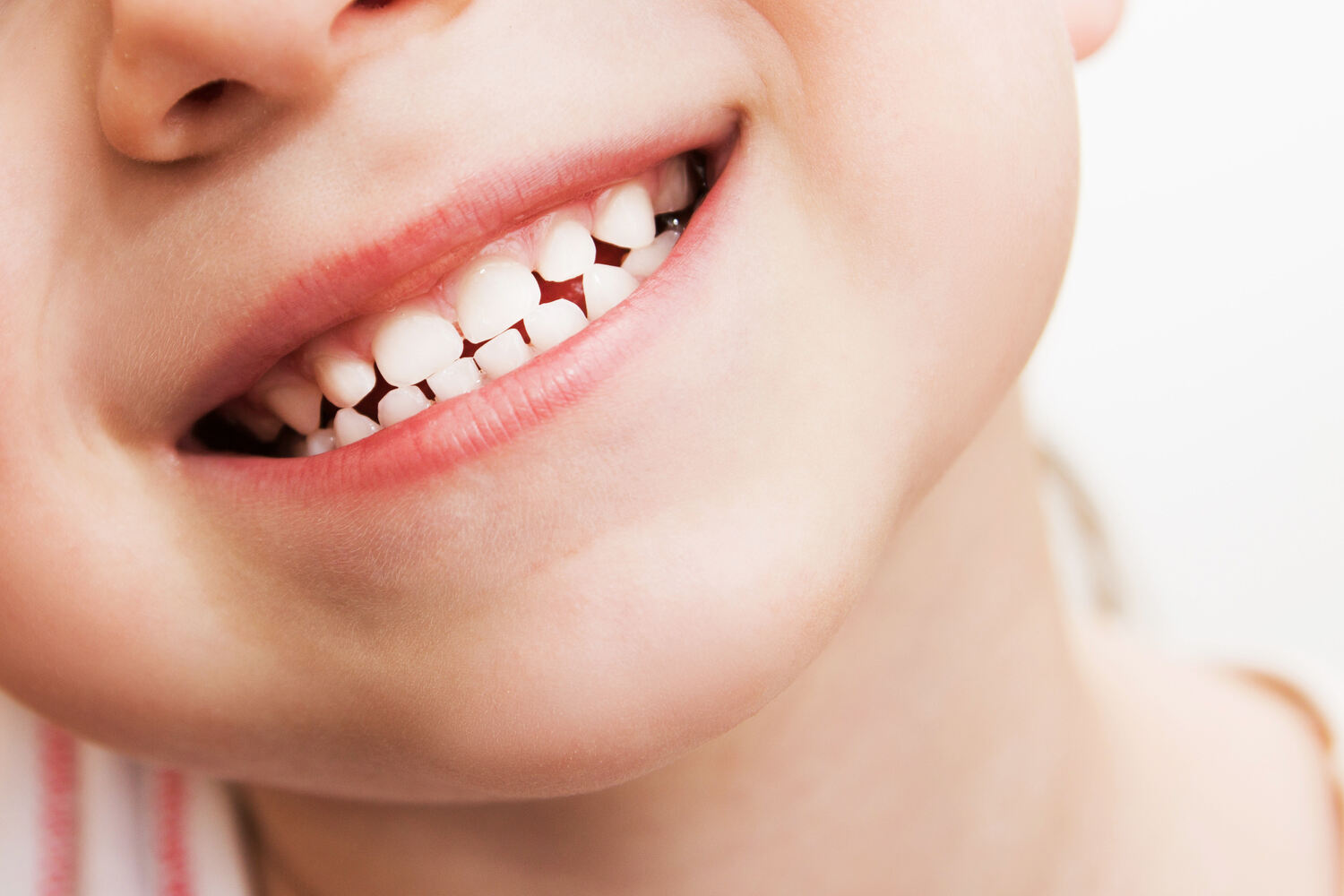
Treatment for your toddler’s discolored teeth depends on its cause. External discoloration can be managed through regular brushing using a soft-bristled toothbrush and low-dose fluoride toothpaste. You may also use adult toothpaste possessing some scrubbing power. However, remember to brush softly as brushing the teeth harshly can damage their gum and enamel. Remember to begin brushing as soon as the first tooth erupts to prevent dental decay and tooth discoloration.
Intrinsic discoloration cannot be reversed but it can be managed by a pediatric dentist. Consult a qualified dentist who can offer the following treatments to manage tooth discoloration in toddlers-
- Teeth whitening using active bleaching agents in a clinical setup (5a)
- Pumice treatment to deal with stubborn stains caused by medications.
- Provide veneers for severe discoloration not managed through the above methods
- Placing a dental cap, or crown to camouflage tooth discoloration (5b)
You can also try some home techniques to care for your toddler’s teeth and prevent stains, like-
- Ensure your toddler brushes immediately after eating or drinking something with high acidity
- Offer healthy fruits and vegetables that are hard and have a scrubbing action on their teeth while they chew on them
- Avoid processed acidic foods and beverages
How Can You Prevent Tooth Discoloration in Toddlers?

Toddler’s teeth look discolored, which occurs due to internal factors that cannot be prevented, but can be treated, and the normal color of the teeth can be regained. On the other hand, discoloration of the teeth due to external factors can be prevented if you follow the below steps-
1. Regular Brushing
Make sure your toddler brushes their teeth twice daily, preferably after every meal. Use a soft-bristled toothbrush with a low-dose fluoride toothpaste.
2. Flossing
Flossing the teeth to remove plaque, bacteria, and food debris from the interdental areas (in between teeth) is always beneficial to prevent decay and tooth discoloration.
3. Healthy Diet
Ensure your toddler consumes a healthy, well-balanced that includes fruits, vegetables, proteins, and whole grains. This provides the essential nutrients required for healthy teeth and gums and also prevents nutritional deficiencies.
4. Regular Dental Visits
Taking your toddler to a dentist at least once in 6 months is essential to examine their mouth to check for any signs of cavity, discoloration, or other oral problems.
If your toddler’s teeth show signs of stains and discoloration, it is best to consult a dentist. A thorough oral exam can help determine the cause of tooth discoloration and the further course of action. These days a lot of treatment options are available. It is better to inculcate good oral hygiene habits in your toddler. This will help them in maintaining their teeth well and keep dental problems at bay.
[Read : ]
FAQ’s
1. Why is my Toddler’s Tooth Turning Dark?
The most common cause of your toddler’s teeth turning dark is due to trauma. The impact can be so severe that it may result in bleeding of the blood vessels within the teeth.
2. Does Tooth Discoloration go Away?
Usually tooth discoloration lasts for several days, weeks, and even months. The tooth discoloration does not go away on its own and may require dental treatment.
3. What Vitamin Deficiency Causes Teeth Discoloration?
Calcium deficiency can often result in teeth discoloration and even tooth loss. Calcium is one of the essential minerals needed to maintain dental health.
4. Can a Discolored Tooth Turn White Again?
Discolored teeth can be reversed and turned white with the help of effective dental treatments like root canal therapy, or teeth whitening. However, ensure you receive treatment from a qualified dentist.
5. Can Yellow Teeth Become White Again?
Yellow teeth can successfully become white again through teeth whitening procedures. These treatments use special bleaching agents and curing light to whiten the teeth and remove stains. Teeth whitening can be performed at home or in the dental clinic.
6. Does Coconut Oil Whiten Teeth?
No, coconut oil cannot whiten your teeth. There is no research evidence to claim this since coconut oil does not contain any teeth-whitening properties. However, coconut oil can keep dental plaque and bacteria at bay.
References
- Shades of Decay: The Meanings of Tooth Discoloration and Deterioration to Mexican Immigrant Caregivers of Young Children – [https://www.ncbi.nlm.nih.gov/pmc/articles/PMC4537173/]
- Chromogenic Black Dental Staining in Children: A Case Report – [https://www.ncbi.nlm.nih.gov/pmc/articles/PMC10853677/]
- Dental trauma in primary dentition and the importance of its preservation until the eruption of permanent successor: a 6-year follow-up case report – [https://www.ncbi.nlm.nih.gov/pmc/articles/PMC8610820/]
- Sudden Onset of Tooth Discoloration – [https://www.ncbi.nlm.nih.gov/pmc/articles/PMC6937148/]
- Present status and future directions – Managing discolored teeth – [https://www.ncbi.nlm.nih.gov/pmc/articles/PMC9790475/]

Dr. Hafsa Fatima,Bachelor of Dental Surgery
Responses (0)
Want curated content sharply tailored for your exact stage of parenting?
Related articles

Top 10 Preschools in Mumbai For 2024 – 2025

Top 10 Best Books About Moon to Read For Toddlers
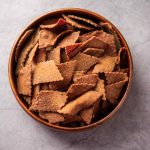
Top Millet-Based Snacks For Toddlers

Febrile Seizures in Toddlers – What Parents Need to Know

Stomach Flu in Toddlers – Symptoms, Treatments and Home Remedies

Gluten-Free Casein-Free (GFCF) Diet For Autistic Kids
Sponsored content
Discover great local businesses around you for your kids.
Get regular updates, great recommendations and other right stuff at the right time.





